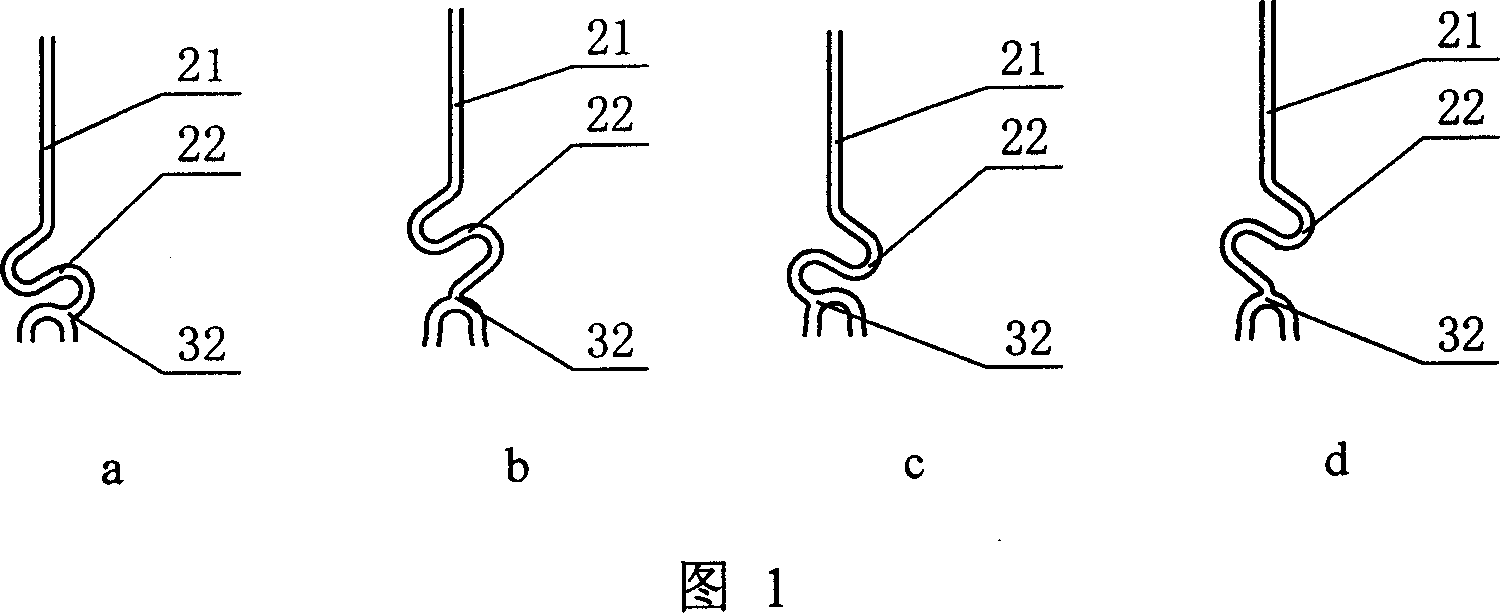Blood vessel support bracket with little tissue prolapsus after implantation
A vascular stent and implantation technology, applied in the directions of blood vessels, stents, and devices of human tubular structures, etc., can solve the problems of high local drug concentration, low local drug concentration, and uneven drug concentration on the blood vessel wall, etc. Reduce tissue prolapse phenomenon, reduce the effect of tissue prolapse
- Summary
- Abstract
- Description
- Claims
- Application Information
AI Technical Summary
Problems solved by technology
Method used
Image
Examples
Embodiment 1
[0022] Embodiment 1: As shown in Fig. 2, a new type of structural vascular stent, the stent is made of 316L medical stainless steel thin-walled microtubes carved into a network structure by laser. The mesh structure is formed by connecting 8 sets of support rings 10 through connecting rods 20 . The upper side of the support ring 10 is composed of three first unit waves 11 and three second unit waves 12 alternately; the lower side is composed of three third unit waves 13 and three fourth unit waves 14 alternately. The waveform of the first unit wave 11 is “ω” shape, and the wave height of the third unit wave 13 is smaller than that of the fourth unit wave 14 . The number of connecting rods 20 between adjacent supporting rings 10 is 3, and the connecting rods 20 are formed by connecting a straight section 21 with an "S"-shaped or reverse "S"-shaped curved section 22, and the peak connection point 32 is located at the peak arc 45-degree position point; the area of all the grid...
Embodiment 2
[0023] Embodiment 2: As shown in FIG. 3 , a new type of structural vascular stent is composed of cobalt-chromium alloy L605 thin-walled microtubes carved into a network structure by laser. The mesh structure is composed of 8 sets of support rings 10 connected by connecting rods, and the upper side of the support rings 10 is composed of two groups consisting of one first unit wave 11 and two continuous second unit waves 12 alternately; The lower side of the support ring 10 is composed of two groups consisting of one first unit wave 11 and two third unit waves 13 alternately. The waveform of the first unit wave 1 is "ω"-shaped; the number of connecting rods 20 between adjacent support rings 10 is 2; The connection point 32 is located at the highest point of the wave crest; all grid windows of the bracket have equal areas.
Embodiment 3
[0024] Embodiment 3: As shown in FIG. 4 , a new type of structural vascular stent is composed of cobalt-chromium alloy L605 thin-walled microtubes carved into a network structure by laser. The network structure is composed of 9 sets of support rings 10 connected by connecting rods. The upper side of the support ring 10 is composed of 4 first unit waves 11 and 4 second unit waves 12 alternately; the lower side is composed of 4 third unit waves 12. The unit wave 13 and four fourth unit waves 14 are alternately formed. The waveform of the first unit wave 11 is “ω” shape, and the wave height of the third unit wave 13 is smaller than that of the fourth unit wave 14 . The number of connecting rods 20 between adjacent supporting rings 10 is 4, and each connecting rod 20 is formed by connecting a straight section 21 with an "S"-shaped or reverse "S"-shaped curved section 22, and the peak connection point 32 is located at the peak The highest position point; the area of all the grid...
PUM
 Login to View More
Login to View More Abstract
Description
Claims
Application Information
 Login to View More
Login to View More - Generate Ideas
- Intellectual Property
- Life Sciences
- Materials
- Tech Scout
- Unparalleled Data Quality
- Higher Quality Content
- 60% Fewer Hallucinations
Browse by: Latest US Patents, China's latest patents, Technical Efficacy Thesaurus, Application Domain, Technology Topic, Popular Technical Reports.
© 2025 PatSnap. All rights reserved.Legal|Privacy policy|Modern Slavery Act Transparency Statement|Sitemap|About US| Contact US: help@patsnap.com



